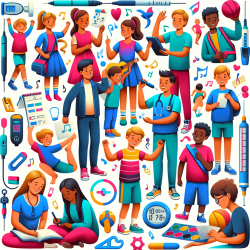Introduction
The COVID-19 pandemic has significantly impacted educational systems worldwide, prompting the need for innovative solutions to ensure safe learning environments. One such solution is the use of Geographic Information Systems (GIS) for classroom management, as highlighted in the research article "GIS-based classroom management system to support COVID-19 social distance planning." This blog will explore how practitioners can leverage GIS to improve classroom management and ensure compliance with social distancing guidelines.
The Role of GIS in Classroom Management
GIS technology offers a powerful tool for visualizing and managing spatial data, making it an ideal solution for classroom management during the pandemic. By utilizing GIS, schools can optimize seating arrangements to comply with social distancing guidelines, ensuring a safe return to in-person learning. The research presented in the article demonstrates the application of GIS in two types of classroom settings: fixed seating and movable seating.
Implementing GIS-Based Solutions
For practitioners looking to implement GIS-based classroom management systems, the research provides valuable insights into the development and application of custom GIS tools. These tools are built on Python scripts and can be executed to calculate revised seating capacities while maintaining safe social distances. The fixed model tool uses an optimized backtracking algorithm, while the flexible model tool accommodates various classroom dimensions and fixtures.
Real-World Application and Benefits
The GIS-based system was successfully implemented at Eastern Michigan University, supporting campus reopening plans in 2020. This real-world application highlights the system's effectiveness in managing classroom seating while adhering to CDC guidelines. By adopting GIS technology, schools can enhance their decision-making processes, improve safety, and facilitate a smoother transition back to in-person learning.
Encouraging Further Research
While the research provides a robust framework for GIS-based classroom management, there is ample opportunity for further exploration. Practitioners are encouraged to investigate additional applications of GIS in educational settings, such as outdoor seating arrangements or integration with other technologies. By continuing to innovate and adapt, educators can better prepare for future challenges and ensure the safety and success of their students.
Conclusion
GIS technology offers a data-driven approach to classroom management, providing a valuable tool for schools navigating the challenges of the COVID-19 pandemic. By implementing the outcomes of this research, practitioners can enhance their skills and contribute to safer learning environments. For those interested in exploring this topic further, the original research paper is available for review.
To read the original research paper, please follow this link: GIS-based classroom management system to support COVID-19 social distance planning.










